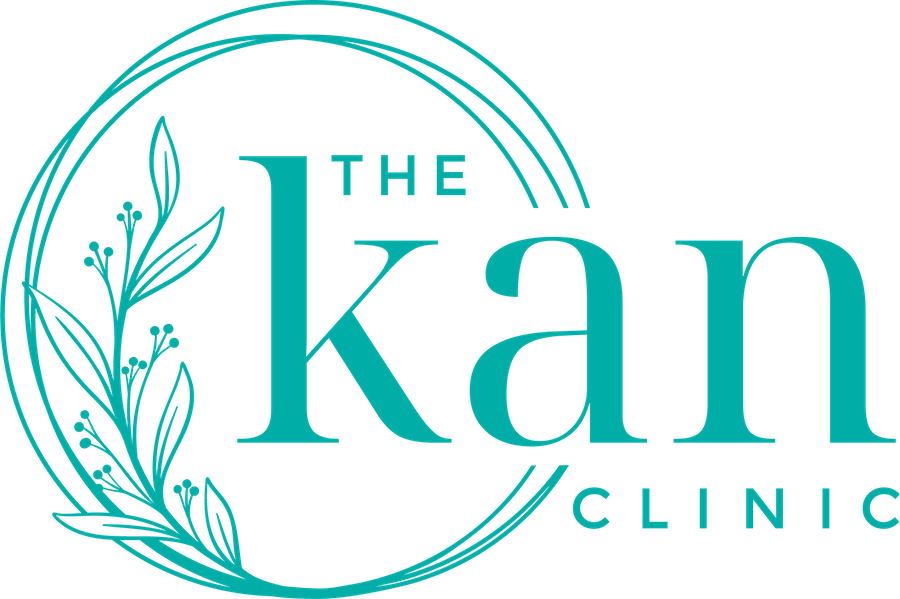Your Ultimate Guide to PCOS and All of it's Variations
Polycystic Ovary Syndrome (PCOS) is a complex and multifaceted disorder that affects millions of people worldwide. In fact, it’s one of the most common gynaecological conditions. PCOS is actually not a disease, but a cluster of symptoms occurring at the same time, driven by various underlying biological mechanisms. There are generally considered to be 4 distinct types of PCOS - insulin-resistant PCOS, post-pill PCOS, inflammatory PCOS, and adrenal PCOS - and in order to successfully support patients in this area, it’s important to know which type of PCOS you’re dealing with.
Before we get into the nitty gritty details, let’s start with what PCOS actually is, which is simply put: an excess of androgen, or ‘male hormones’. The condition is characterised by symptoms such as irregular or absent periods, acne or oily skin, weight gain particularly around the midsection, male patterns of hair growth (lower back, neck, face, chest, belly), thinning of hair on the head, and darkened skin patches (known as ‘acanthosis nigricans’). And whilst the name suggests the presence of ovarian cysts, the condition actually has nothing to do with this. An ultrasound may reveal an excess of ‘follicles’, or eggs, however this is not a diagnostic feature of PCOS and many people have the condition with no abnormal ‘cysts’ at all.
1. Insulin-Resistant PCOS
Probably the most common type of PCOS, insulin resistance means that your body’s cell are less responsive to insulin - a hormone that keeps our blood glucose in range. When our cells don’t respond to insulin appropriately, it causes the pancreas to produce more. The resulting high insulin levels can stimulate the ovaries to produce excess androgens and reduces synthesis of a proteins allied sex hormone-binding globulin (SHGB), which normally binds to androgens and limits their activity. This results in higher levels of free androgens in the blood and can lead to the classical PCOS symptoms we mentioned above
2. Post-Pill PCOS
As the name suggests, post-pill PCOS arises after discontinuation of hormonal contraceptives. Because oral contraceptives suppress the natural hormonal cycle by providing external hormones, when this is stopped, the body may experience a temporary surge in androgens as it tries to reestablish its own hormonal balance. This can unmask underlying PCOS or trigger PCOS-like symptoms. The sudden withdrawal from synthetic hormones can disrupt the hypothalamic-pituitary-ovarian (HPO) axis, leading to irregular menstrual cycles and ovulation issues. This type of PCOS is often temporary, and the body typically readjusts hormone levels within a few months.
3. Inflammatory PCOS
Chronic inflammation can be a key driver in the development of PCOS. Chronic low-grade inflammation can interfere with insulin signalling and thus contribute to insulin resistance. Additionally, inflammatory cytokines - molecules secreted by immune cells - can directly affect ovarian function, disrupt follicle development and lead to anovulation. Inflammation also increases oxidative stress which can damage ovarian tissue, further contributing to dysfunction and androgen excess. And finally, gut health plays a role here whereby an imbalance in gut microbiota can promote systemic inflammation and influence metabolic and hormonal pathways, exacerbating PCOS. Some signs that inflammation may be driving your PCOS include unaddressed digestive issues like constipation, diarrhoea and SIBO, headaches, joint pain, allergic-type conditions like hay fever or eczema, fatigue, frequent illness, pre-existing autoimmune conditions like Hashimoto’s or psoriasis, and high inflammatory markers on blood tests.
4. Adrenal PCOS
Adrenal PCOS is primarily driven by adrenal gland dysfunction and hyperactivity. When the adrenal glands produce too much DHEAS, a type of androgen, this can interfere with ovarian function. In this type of PCOS, it’s normal to have normal levels of other androgens including testosterone and androstenedione. Chronic stress can play a role here by activating the hypothalamic-pituitary-adrenal (HPA) axis, leading to increased cortisol and adrenal androgen production. This can then in turn disrupt the HPO axis and menstrual regularity.
In all types of PCOS, it’s important to address the underlying pathophysiological mechanisms. For example:
in insulin-resistant PCOS, treatment should be aimed at reversing insulin resistance with dietary changes, exercise, and targeted supplements like magnesium, myo-inositol, chromium,
for post-pill PCOS, sometimes the body just needs to run its natural course and can be supported with simple dietary interventions like reducing sugar and dairy. Supplements like zinc, licorice, paeony, magnesium, and B6 may be useful here.
in inflammatory PCOS, strategies to reduce inflammation such as addressing and/or avoid food sensitivities, correcting any gut imbalances, increasing anti-inflammatory food sources, and focusing on managing stress. Supplements that can be considered here include zinc, curcumin, omega-3 fatty acids, and N-acetyl-cysteine.
and finally, for adrenal PCOS, treatment should focus on restoring adrenal function with adaptogenic herbal medicines like withania, rhodiola, and licorice, as well as nutrients like zinc, magnesium, and pantothenic acid. It’s also important here to employ lifestyle interventions to reduce stress, increase mindfulness, and support sleep.
Understanding the mechanisms that drive different types of PCOS can guide more personalised and effective treatment approaches, addressing the specific needs and underlying causes. This targeted approach leads to better management of symptoms and overall improvement in quality of life for people with PCOS. Book in with one of our naturopaths today and get to the bottom of your PCOS!
Interested in More Tips and Naturopathic Insights?
Subscribe to our newsletter to receive expert advice, health tips, and updates directly to your inbox!
